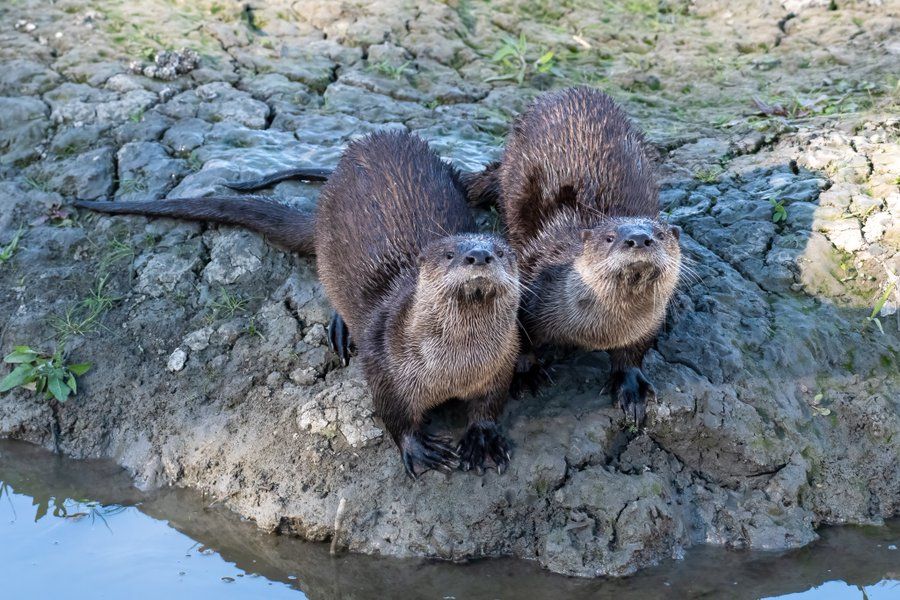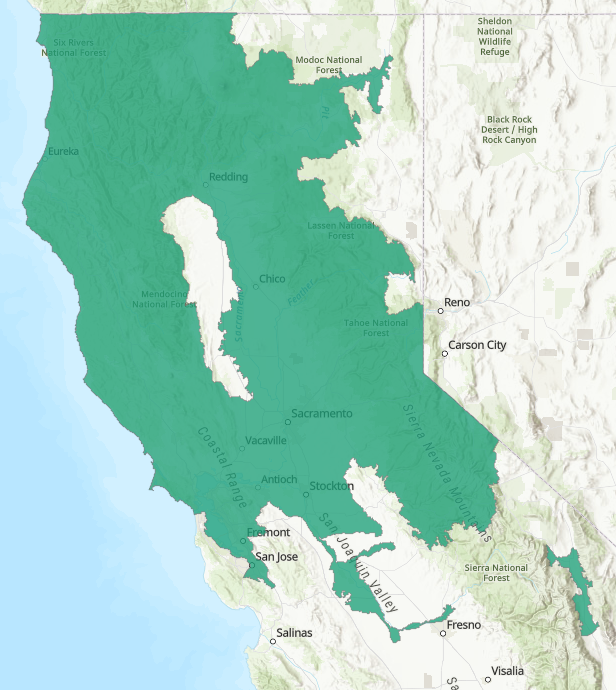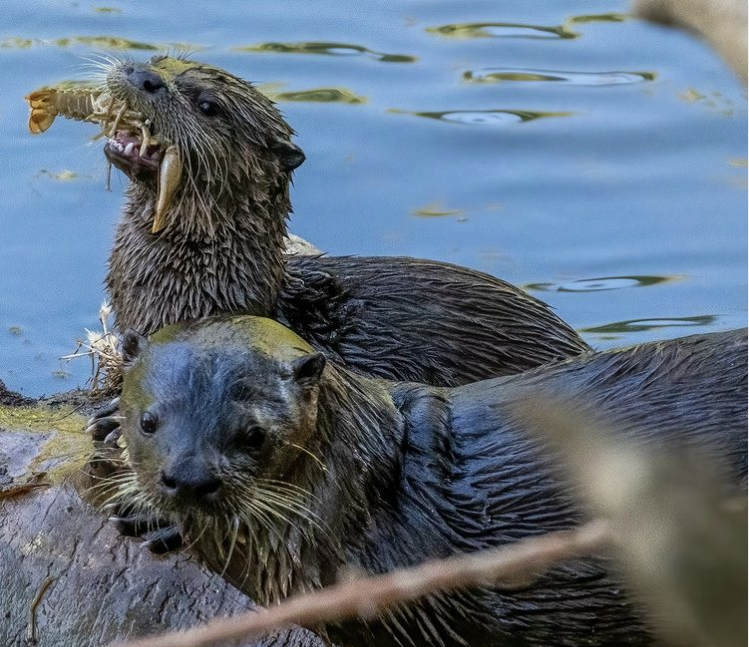Tuleyome's Science Corner - River Otters

River Otters at Yolo Bypass by Jonathan Eisen
Meet one of California's cutest and most voracious predators – the North American river otter! River otters are found throughout most of Northern California, including in much of Berryessa Snow Mountain National Monument. They live in aquatic habitats including rivers, lakes, streams, and marshes and can be found at Yolo Bypass, UC Davis Riparian Reserve, and in some of the many sloughs bordering rice fields.

Range of the North American River Otter in California (CDFW)
River otters will utilize a variety of locations as nesting sites, including thickets, cavities in riverbanks or logs, or burrows abandoned by other animals. In California, female river otters will typically give birth in March or April and the pups will remain with their mother until the following winter. Adult male otters have also been known to form social groups of up to 17 individuals.
The diet of river otters varies by location and time of year, but typically consists of fish and crustaceans such as crayfish. River otters have also been known to eat amphibians and birds, particularly migratory water birds during the winter.

River otter enjoying a crayfish at the UC Davis Riparian Preserve by Jonathan Eisen
River otters are also found along the coast and will hunt in bays and inlets. They can be distinguished from sea otters by size (sea otters are much larger) and by their behavior in the water – river otters are generally always moving in the water and don’t float on their backs like sea otters. According to a recent phylogenetic study, North American river otters (Lontra canadensis) are actually more closely related to several other species of river otters from Central and South America, than they are to sea otters (Enhydra lutris). The ancestor of these American river otters is thought to have crossed into the Americas from Asia via the Bering land bridge.
This study also showed that North American river otters have significantly higher genetic diversity than sea otters, likely because the latter were hunted almost to extinction in the 19th century for the fur trade. River otters were also trapped for fur until the practice was banned in California in 1961. Since then, river otter populations and ranges have expanded, with otters returning to the Bay Area and other parts of their original range. Due to their genetic diversity, sizable population, and wide range, North American river otters are not considered to be threatened, though water pollution and habitat destruction are still a concern.
This means that river otters are relatively easy to find in our area. The best places to look are bodies of water that are surrounded by thickets of vegetation. Signs of otters in the area include mud slides leading into the water and latrine sites on shore with scat containing crayfish shells. If you are lucky enough to find otters, you should resist the urge to try to cuddle them, as they are wild animals and have been occasionally known to attack people. So, the next time you’re heading to an area with rivers or lakes, be sure to bring your binoculars and watch the water and shoreline for signs of our furry neighbors!
-Geoff Benn (gbenn@tuleyome.org)
Education Associate
About Geoffrey Benn
Geoff is Tuleyome's Education Associate. He has a Ph.D. in Plant Biology and previously taught introductory biology at UC Davis and American River College.
RECENT ARTICLES






